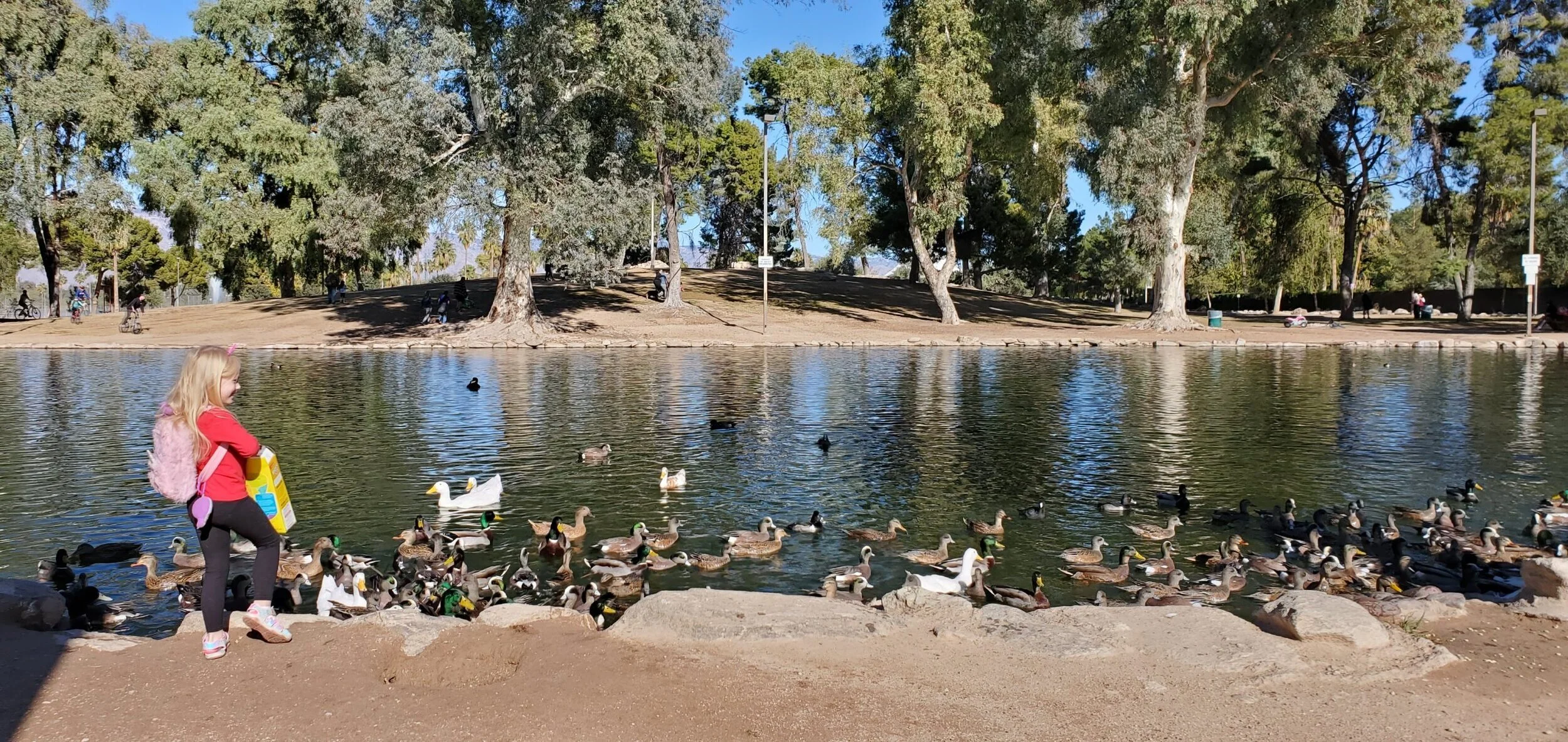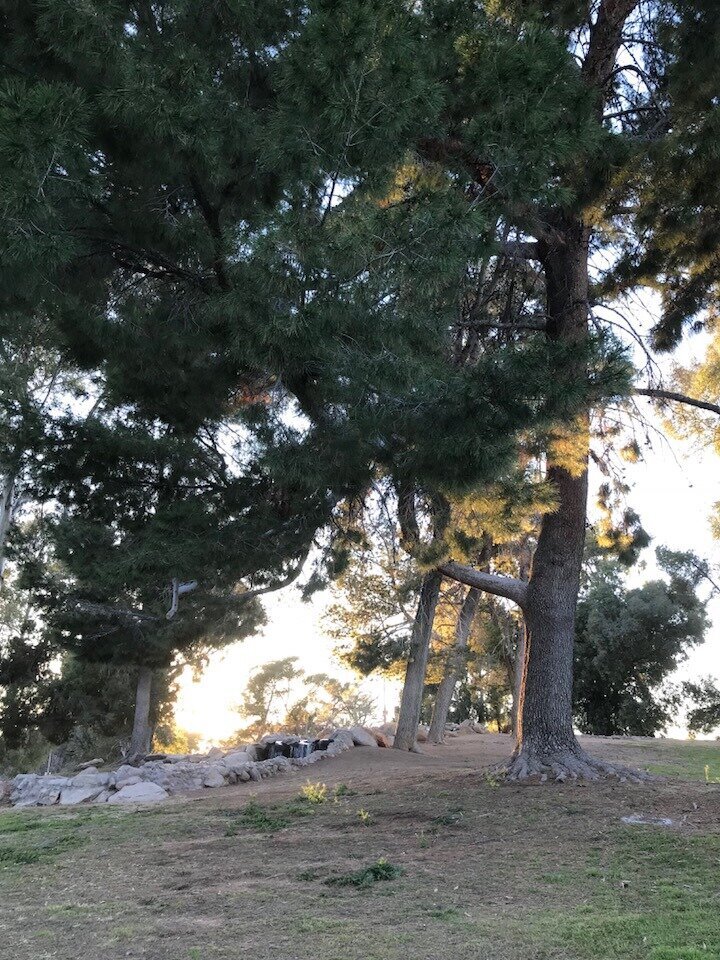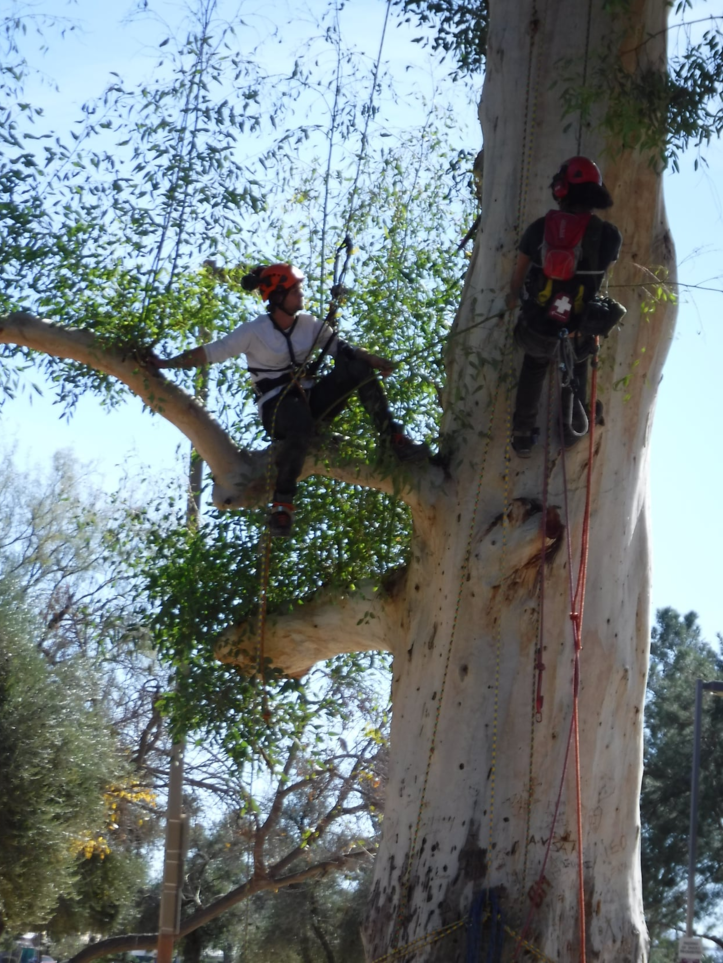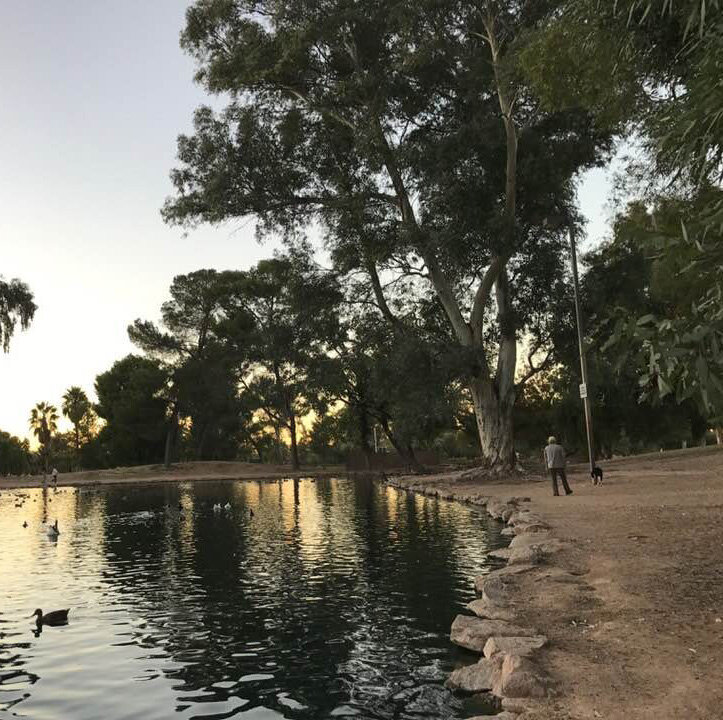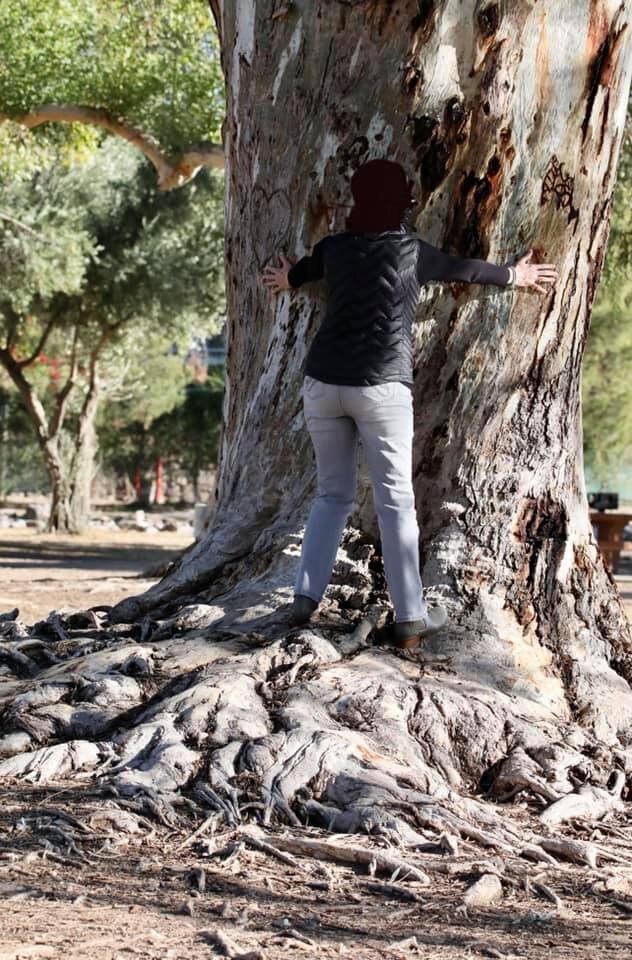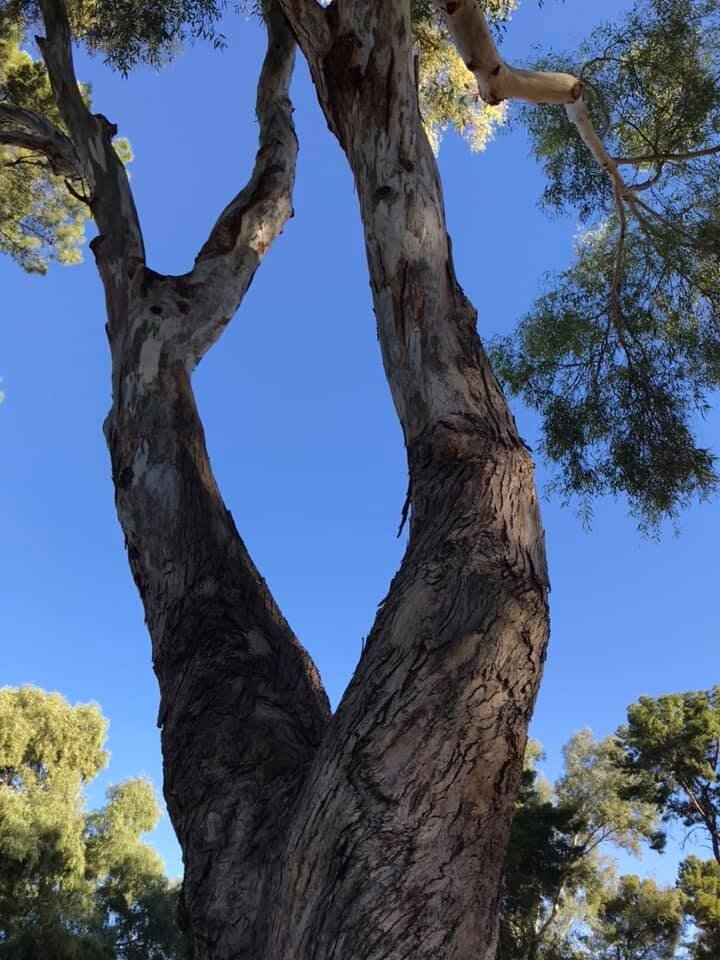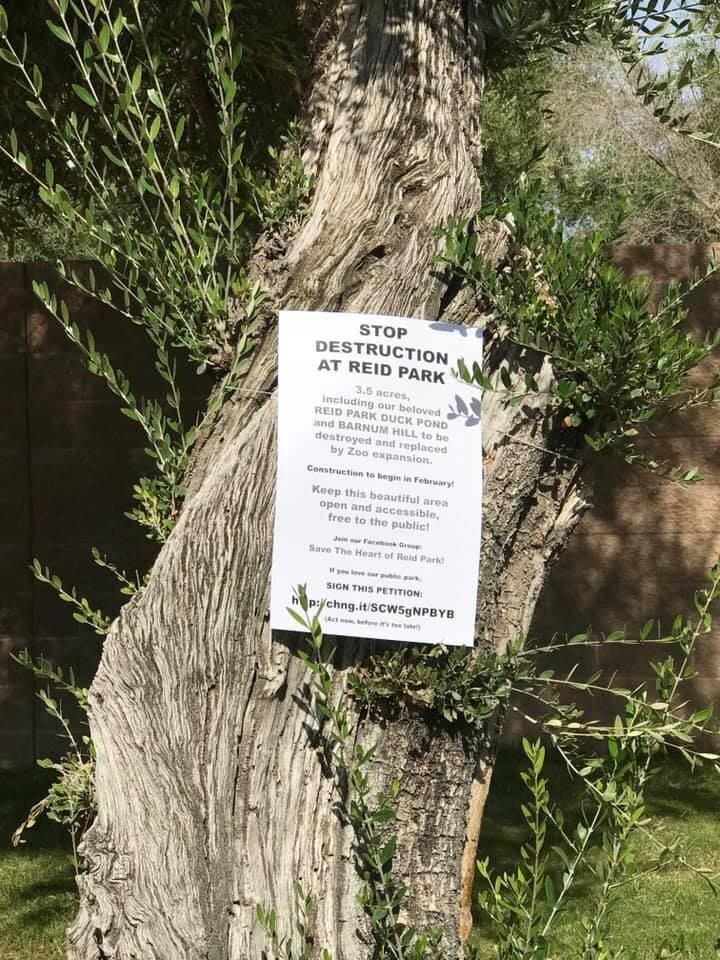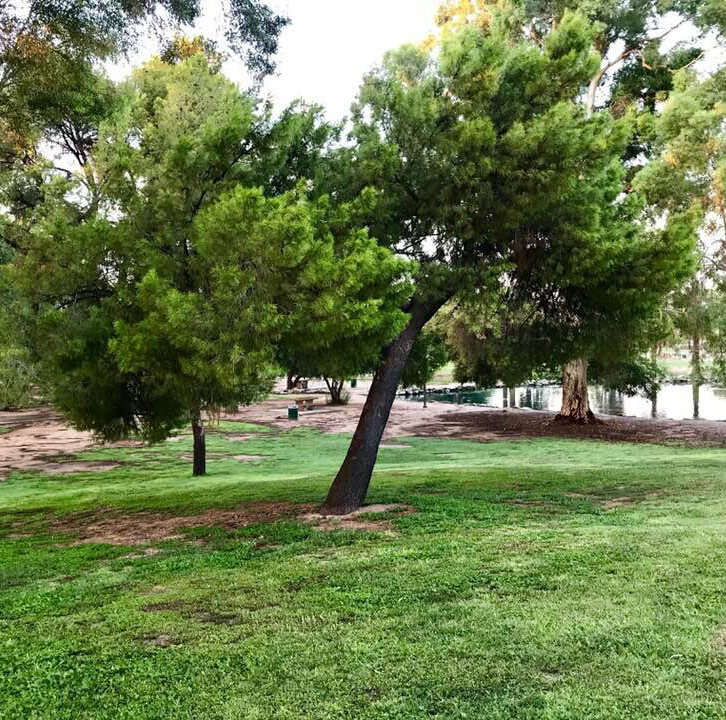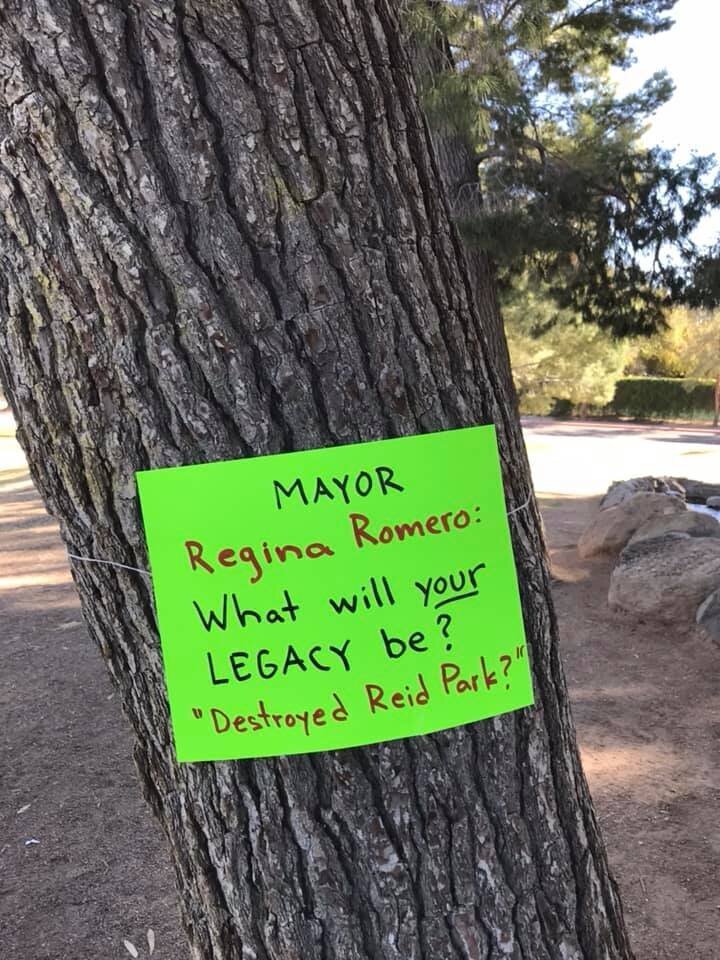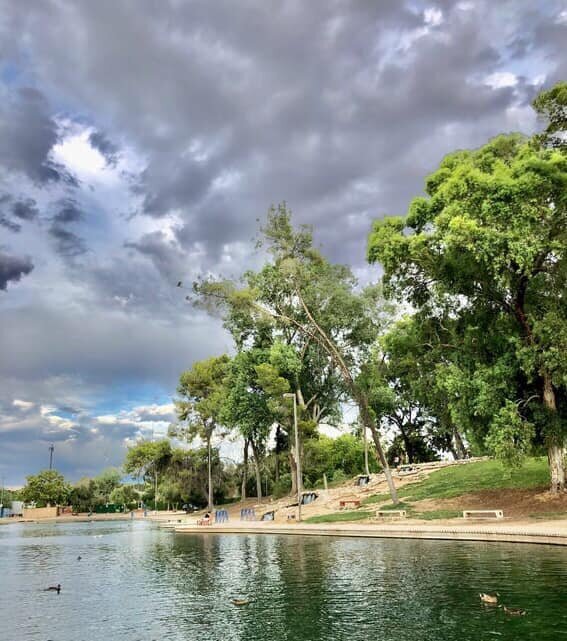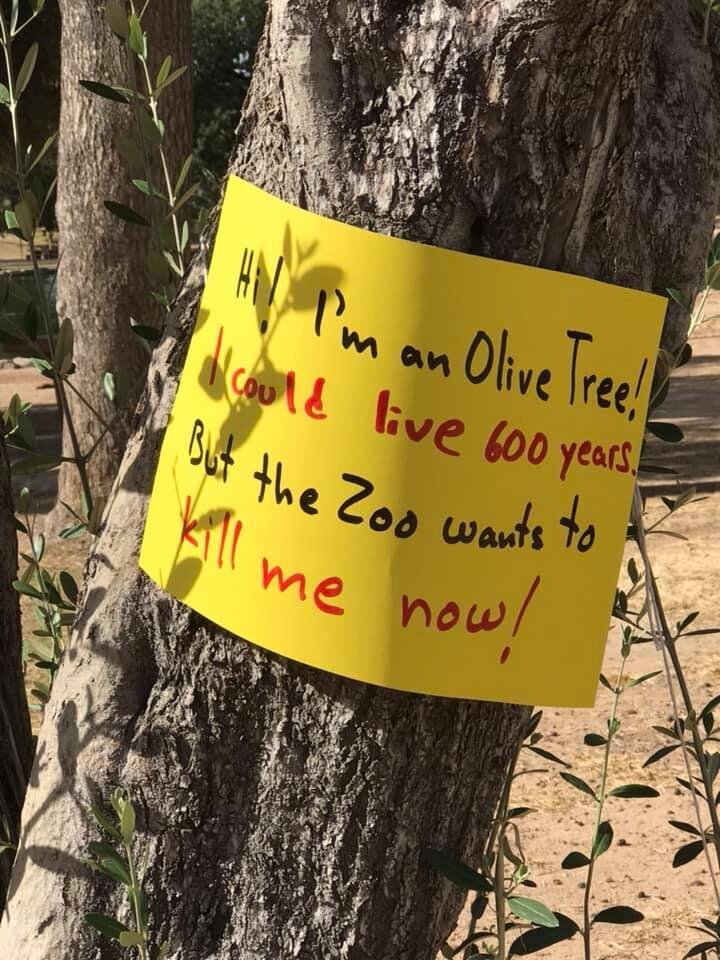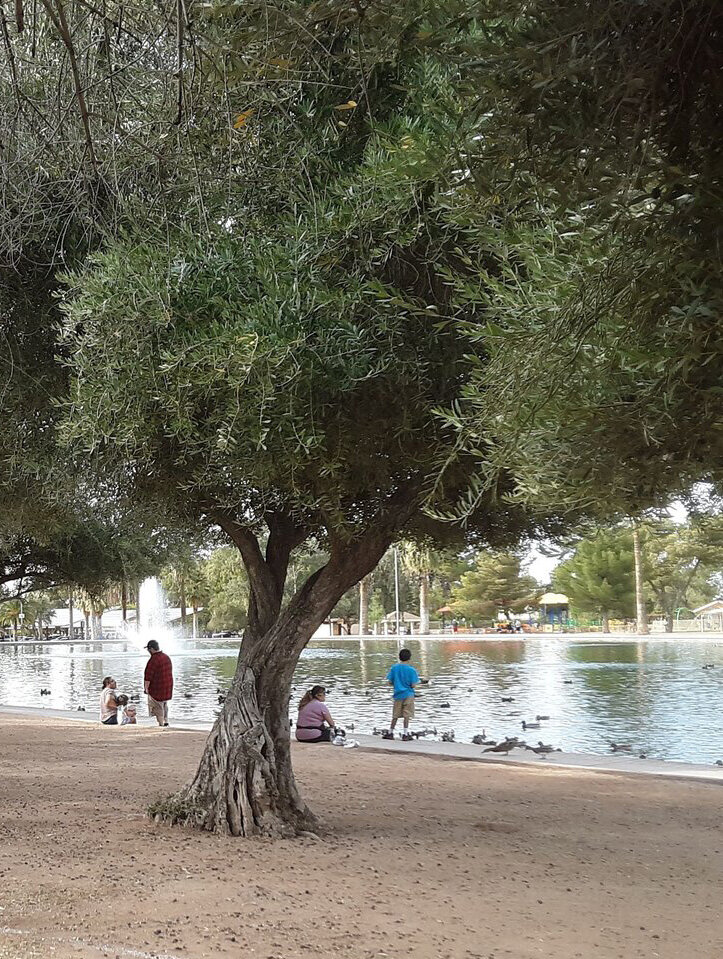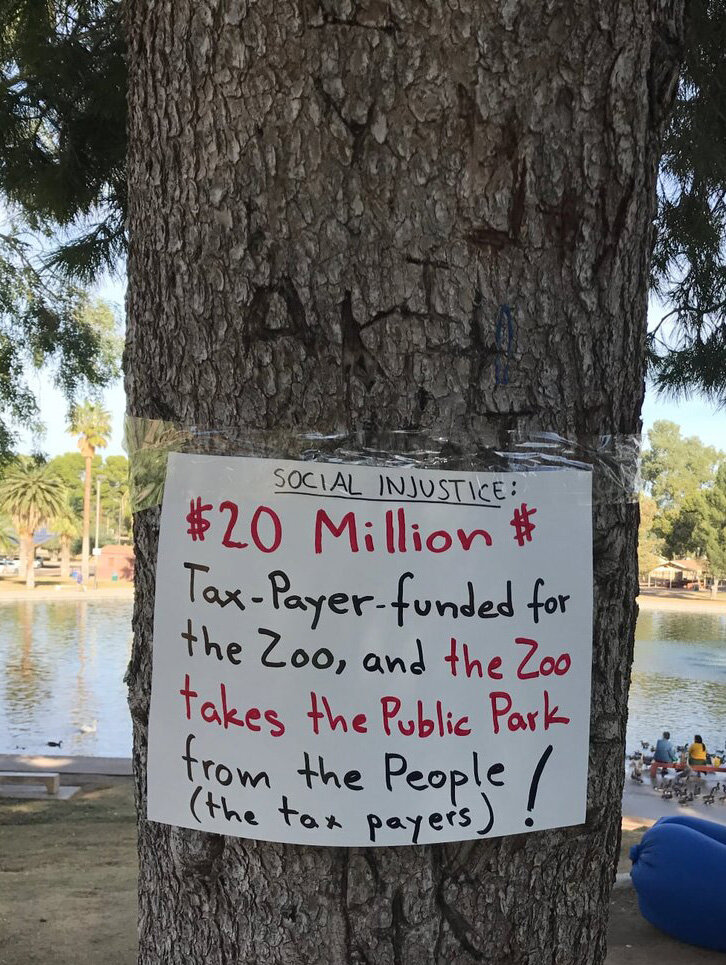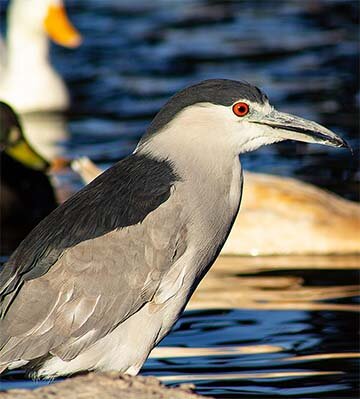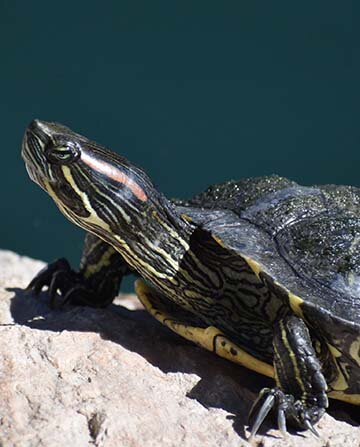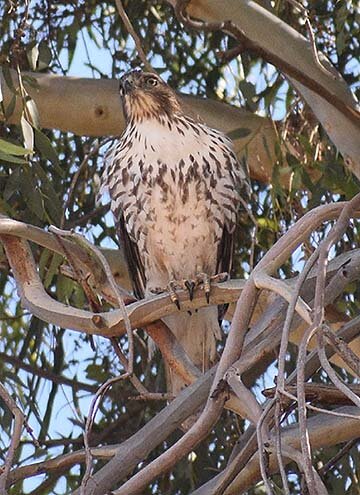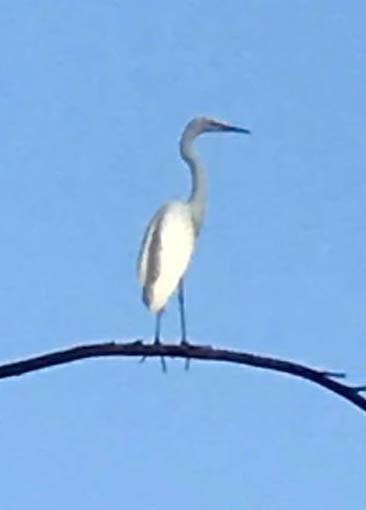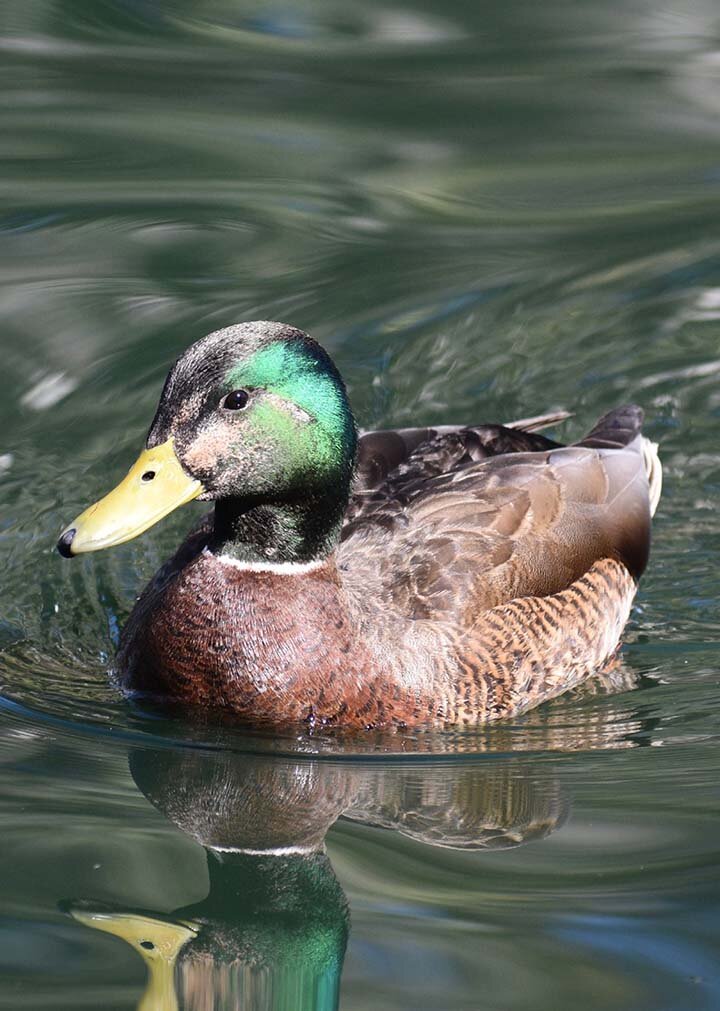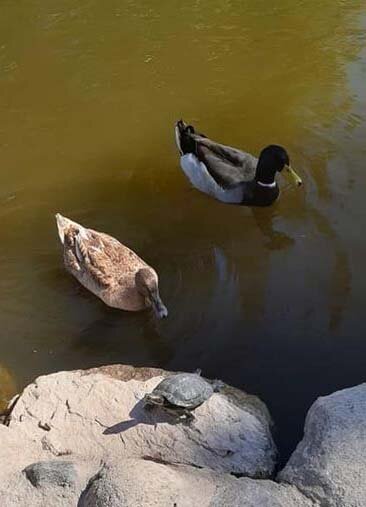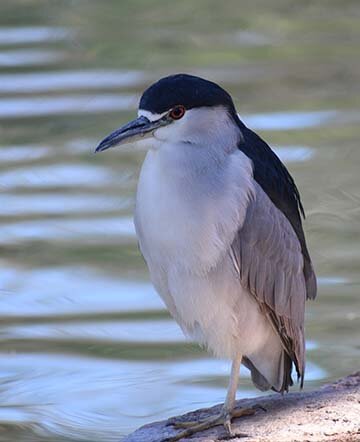Flora and Fauna
Save Barnum Hill’s Old-Growth Trees
We walked the site of Barnum Hill and the south duck pond with the then Interim Director of the Tucson Parks and Recreation Department, the zoo CEO and the zoo project manager on November 14th, 2020. The zoo project manager told us that some trees had had beetle infestation and had been removed. He also said that most of the trees on Barnum Hill are scheduled for destruction if plans for the tiger enclosure go forward. He also told us that those trees not scheduled for destruction would likely die from the planned devastation of the old-growth root network on Barnum Hill. According to the project manager, the reason the zoo intends to get rid of the trees on Barnum Hill if their plan goes forward is that the tigers could use the trees to escape the enclosure, which would be a safety hazard for the people of Tucson.
The mere notion of removing all Barnum Hill’s vibrant old-growth trees would have been anathema to Reid Park’s visionary namesake, Gene Reid. Under the guidance of his father, who operated a tree farm in Tucson, Gene Reid evolved into a tree expert before the term arborist came into vogue. He planted trees; he didn’t cut them down. Read his story.
The tree canopy equity provided by the Barnum Hill old-growth trees is especially valuable for the city of Tucson, where the mayor and council declared a climate emergency in September, 2020. The tree canopy provided by mature trees constitutes a powerful force in decreasing the effect of extreme heat in a city, and tree canopy equity is the idea that both low-income and high-income communities must benefit equally from the protection provided by tree canopies. “It helps ensure everybody benefits from the power of trees to fulfill our basic needs, such as breathing fresh air and drinking clean water.” Learn more about tree canopy equity here and here.
“A new study found most of Tucson’s hottest neighborhoods lie on the south side, stretching beyond city limits. There’s less shade from trees, and rock and gravel absorb heat, release it into the air and make the area hotter,” writes Toni Davis in his April 6, 2021 report Tucson’s south side gets hotter than other areas of the city, and not just because of elevation. The findings were part of “a regional study that used satellite-gathered data to compare temperatures in poorer and more Latino-based areas to those in wealthier and whiter ones.“ In Tucson, “researchers found River Road, which separates Tucson from the wealthier, higher elevation Catalina Foothills, ‘is almost like a curtain of heat,’ said lead study author Jake Dialesandro.” He also notes, “The city has a big exception: “Reid Park—there’s nothing but grass and trees. That’s a cool area.” See Tucson's heat map.
"A forest is much more than what you see," says ecologist Suzanne Simard. Her 30 years of research in Canadian forests have led to an astounding discovery—trees talk, often and over vast distances. Learn more about the harmonious yet complicated social lives of trees and prepare to see the natural world with new eyes. View Simard’s official TED Talk video titled How Trees Talk to Each Other.
Protect Resident and Migrant Wildlife
Elimination of the Reid Park’s lovely South Pond would spell disaster for its resident turtles. It would also adversely affect the many ducks, geese, swans, herons and egrets for which the South Pond provides habitat and sanctuary. Seasonally, the pond hosts a wide variety of migratory birds as well. Moreover, surrounding the pond and providing cooling shade, the majestic old-growth trees attract hawks, falcons, owls and other regional birds. One Arroyo Chico resident, during daily walks in the park, has seen 102 different aviary species. This astonishing variety of turtles and birds, in turn, attracts to the park large numbers of visitors. From parents who bring their children to see the turtles and feed the ducks to avid birder experts from the Audubon Society or the Sierra Club—all delight in their close encounters and interactions with the pond’s wildlife.
According to Jonathan E. Lutz of Tucson Audubon, “Tucsonans have been inspired by the birds at Reid Park and its public duck ponds for generations. The experience of walking the shorelines of the North and South ponds and interacting with the waterfowl is an invaluable opportunity for people to connect with birds. Barnum Hill and its mature trees, where a Cooper’s Hawk or Vermilion Flycatcher may be seen roosting, provides a publicly accessible, shaded viewing experience that’s unique in the heart of the city. Reid Park is a treasured resource for those who love the outdoors, including the hundreds of birders who flock there annually.”
In a January 26, 2021 letter to the City of Tucson, Mr. Lutz states, “After hearing from members of the community, conducting our own investigation, and fielding input from our board members and professional staff, Tucson Audubon believes the project to expand the footprint of the Reid Park Zoo to include Barnum Hill and the South Pond warrants additional consideration. The loss of accessible urban habitat and opportunities for connections between birds and people will be significant should the project move forward as planned.“ Save the Heart of Reid Park couldn’t agree more, and we express our sincere gratitude to Tucson Audubon for its support in preserving this area so beloved by Tucsonans.
